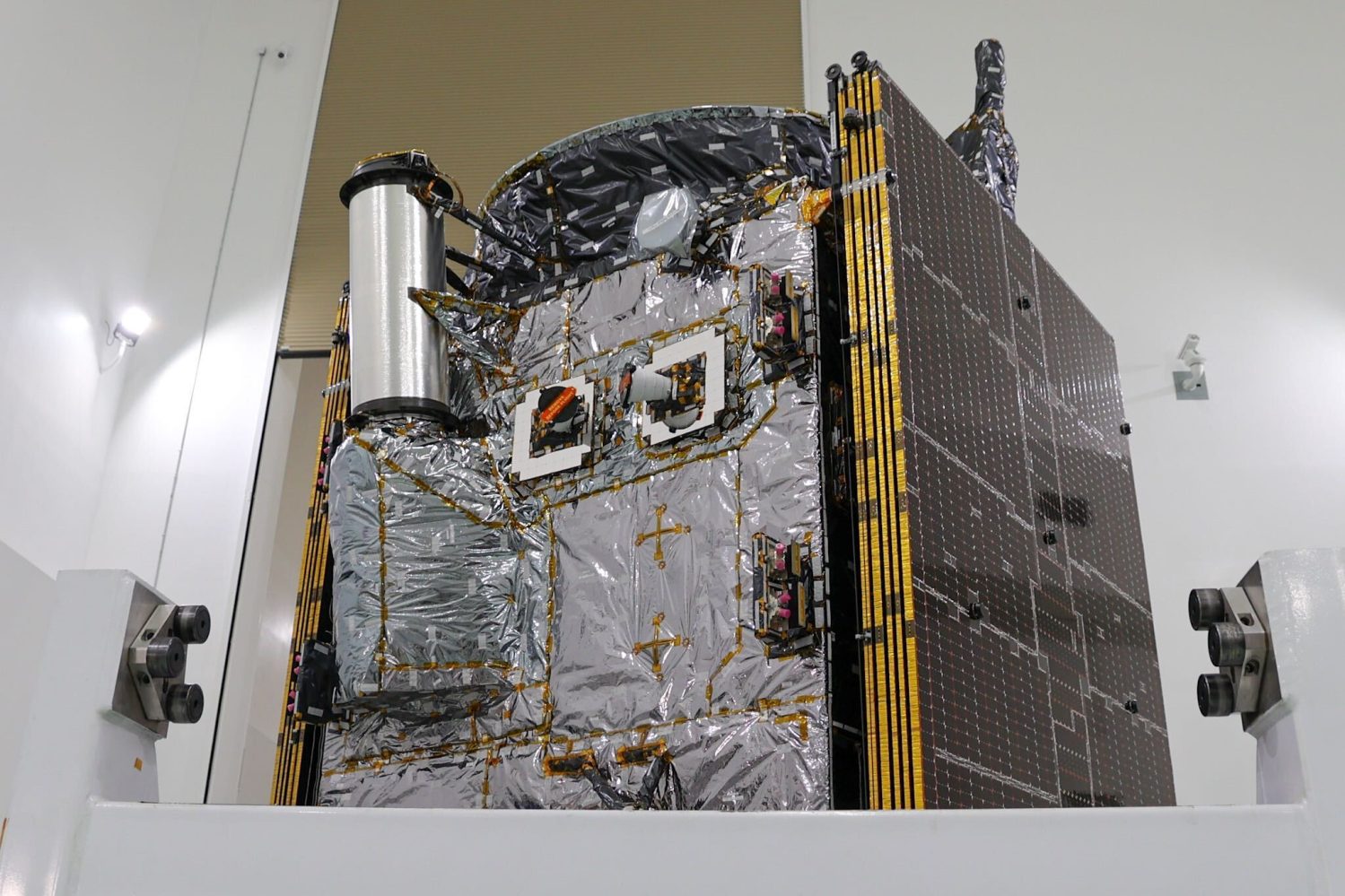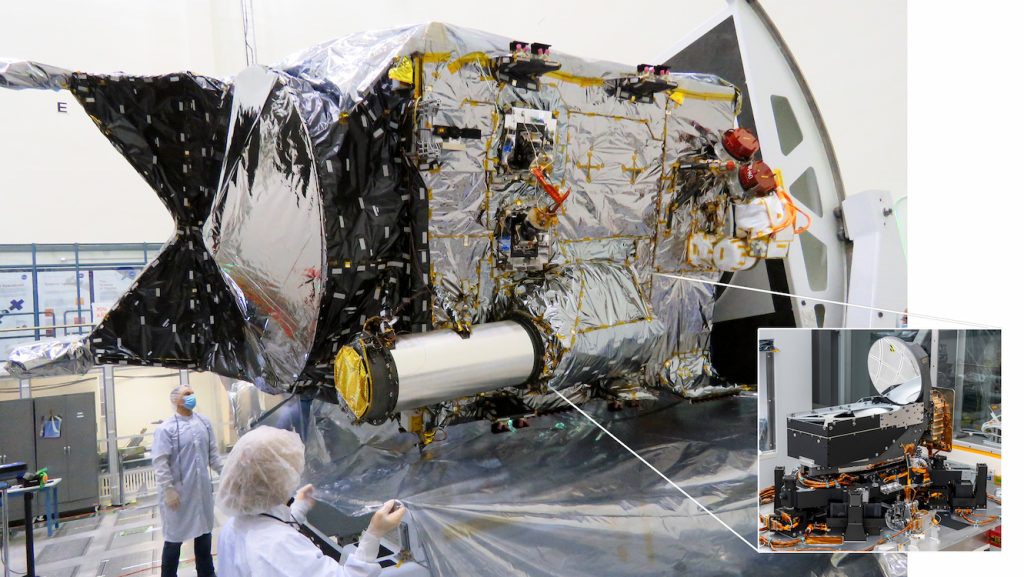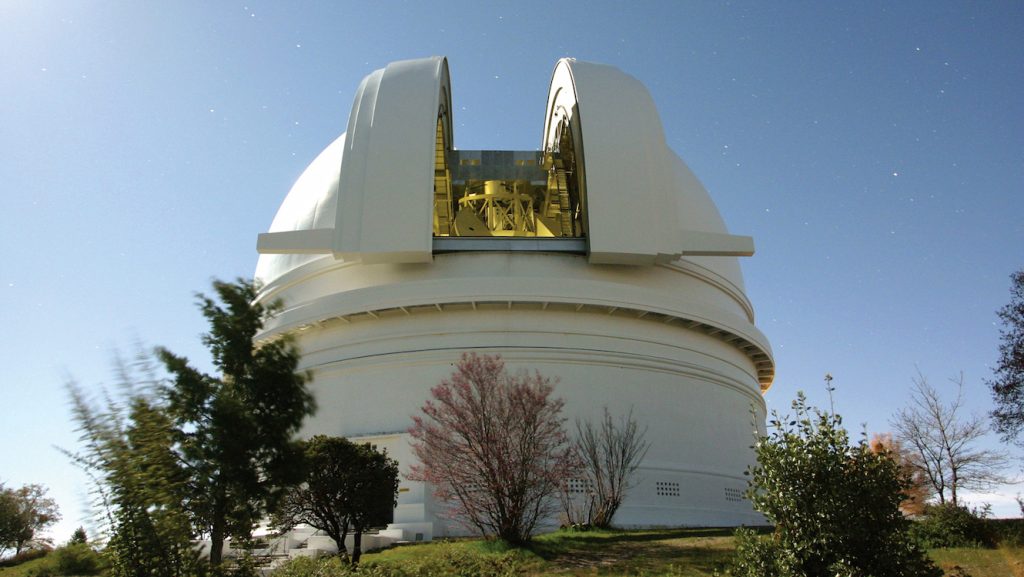
Coming up in a few months, a mission to a distant asteroid is slated to launch on top of a SpaceX Falcon Heavy rocket. With the probe sitting safely in its clean room in Florida awaiting launch, here is everything you need to know about NASA’s Psyche mission.
Psyche, a mission to an asteroid of the same name, will bring along an optical transceiver to test high-bandwidth data transmissions.
The main mission of Psyche is to travel to and study the properties and mysteries of the metal-rich asteroid also called Psyche, which is situated between Mars and Jupiter.
Exploring a metal-rich asteroid
Distinguished by its unique composition, the asteroid Psyche could potentially be an exposed nickel-iron core of an ancient planet, touts NASA, offering unprecedented insights into the solar system’s formative years.
The Astrotech facility in Titusville, Florida, hosted a space technology event for the media on August 11. On hand were subject matter experts and industry leaders converging to showcase cutting-edge advancements and developments for the Psyche mission.
Led by Arizona State University and managed by NASA’s Jet Propulsion Laboratory, the Psyche spacecraft, built by Maxar Technologies, will carry a suite of instruments including an imager, magnetometer, and gamma-ray spectrometer. These tools are expected to help unravel the asteroid’s secrets, according to NASA, exposing its history of collisions and accretion that shaped terrestrial planets.
The scientific objectives of this mission are ambitious, say those close to the project. NASA hopes to determine whether Psyche is a core or unmelted material, unveiling the relative ages of its surface regions and assessing if it shares light elements with Earth’s core.
Additionally, by scrutinizing Psyche’s formation conditions, scientists hope to gain insights into the birth of planets. Equipped with advanced instruments, the Psyche mission may offer a better understanding of planetary evolution and a rare glimpse into the cosmic processes that shaped our celestial neighborhood.
A laser-focused technology demonstration
The Psyche mission will also include cutting-edge laser technology to demonstrate high-speed communication between the deep space probe and Earth. Laser light can transmit signals with larger bandwidth, allowing for more data to be sent at the same time compared to traditional radio waves.
NASA’s Deep Space Optical Communications project, DSOC, set to launch this fall, aims to revolutionize data transmission through the use of lasers, potentially surpassing the capabilities of current radio frequency systems.

JPL is leading the DSOC initiative and it will piggyback on NASA’s Psyche mission, scheduled to launch in October.
The DSOC project features an innovative transceiver that utilizes an 8.6-inch aperture telescope with a never-before-flown photon-counting camera. This transceiver will autonomously scan and lock onto a high-power near-infrared laser uplink transmitted by the Optical Communication Telescope Laboratory at JPL’s Table Mountain Facility in California.
This powerful uplink laser is crucial to demonstrating higher data transmission rates to spacecraft, enabling future deep space missions. Once locked onto the uplink laser, the transceiver will locate Caltech’s Hale Telescope at the Palomar Observatory in San Diego County.
Through its near-infrared laser, the transceiver will transmit high-rate data back to Palomar, overcoming the challenges posed by spacecraft vibrations using state-of-the-art struts.
To receive the downlink laser from the DSOC transceiver, the Hale Telescope has been equipped with a groundbreaking superconducting nanowire single photon detector assembly. Cryogenically cooled, this assembly can detect single incident laser photons and record their arrival time.

The transmitted laser light, traveling over 200 million miles, presents a challenge in extracting information from faint signals, requiring novel signal-processing techniques.
However, the project faces the additional challenge of compensating for the increasing lag in data transmission as the distance between Psyche and Earth grows, potentially resulting in a lag of up to tens of minutes. The dynamic positions of Earth and the spacecraft need to be constantly accounted for.
Although hosted by the Psyche spacecraft, DSOC’s success will be evaluated independently of the Psyche mission. The technology demonstration will span nearly two years after the spacecraft’s launch, all the way to its Mars flyby in 2026.
With the increasing complexity of science data, images, and video expected from deep space missions, NASA hopes to advance technologies like DSOC for eventual routine use by future spacecraft and ground systems.
NASA is setting its sights to support humanity’s next giant leap – sending astronauts to Mars – by expanding the possibilities of broadband communications in space. Moreover, the Psyche mission’s journey to a unique metal-rich asteroid in hopes to expose the nickel-iron core of an early planet, one of the building blocks of our solar system.
FTC: We use income earning auto affiliate links. More.

Comments